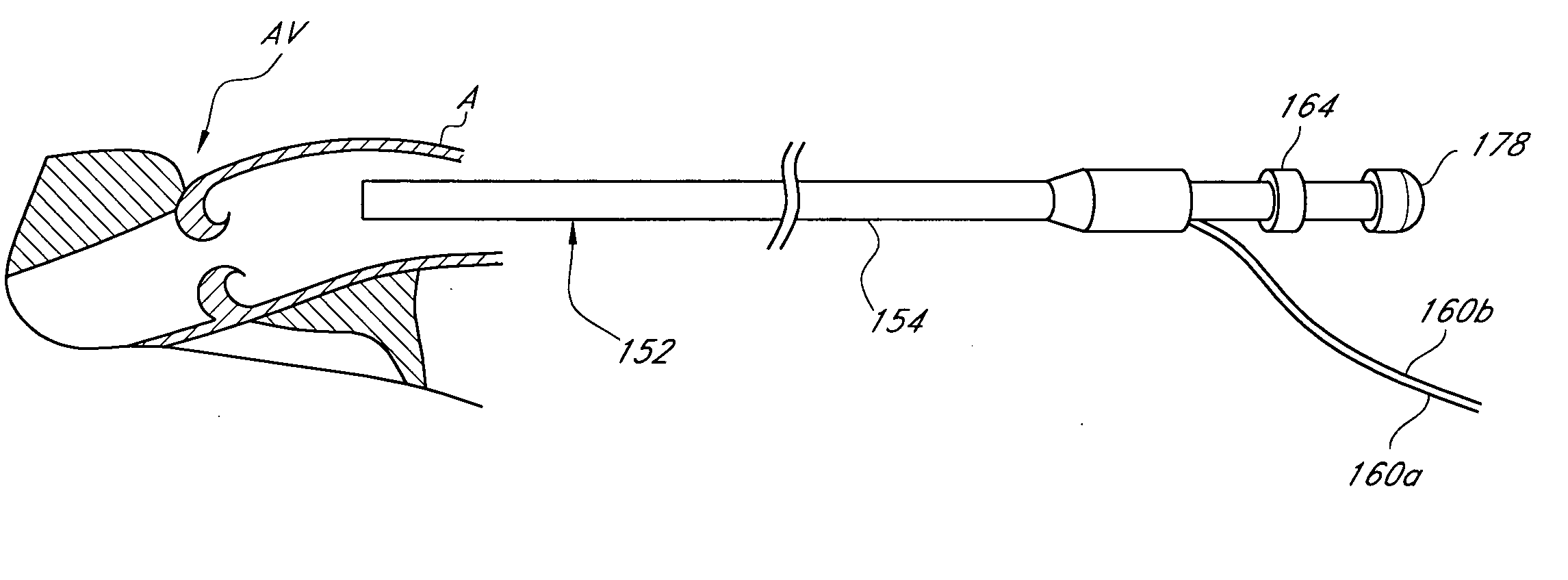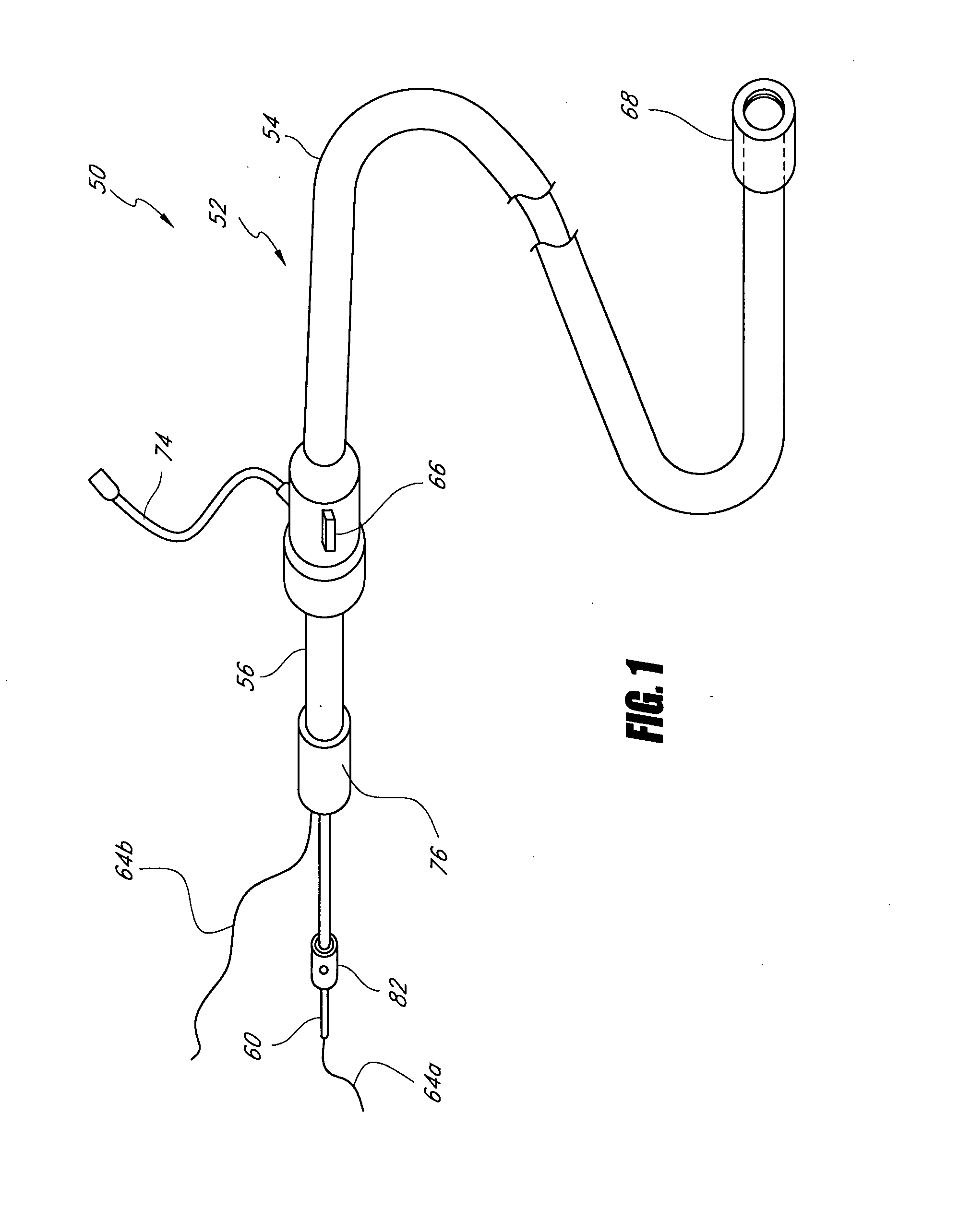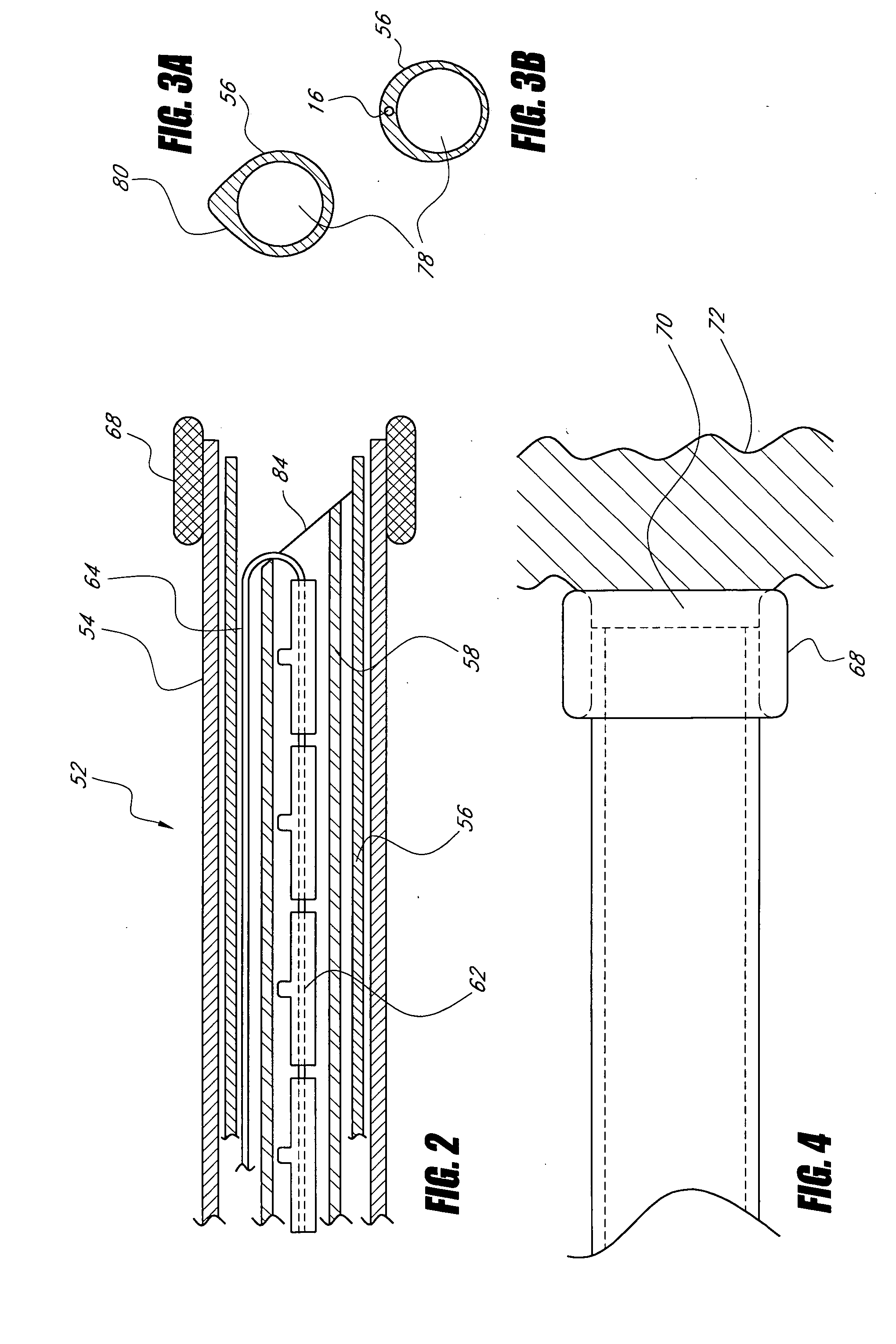Catheter-based tissue remodeling devices and methods
- Summary
- Abstract
- Description
- Claims
- Application Information
AI Technical Summary
Benefits of technology
Problems solved by technology
Method used
Image
Examples
Embodiment Construction
[0077] Preferred embodiments of the present tissue remodeling system facilitate remodeling, tissue joining, or tying of soft tissue preferably in a percutaneous manner utilizing a catheter. In certain preferred arrangements, the system permits a remodeling of the left ventricle of a heart to reduce the volume of the ventricle or reposition papillary muscles. In addition, the preferred systems may be utilized to remodel valve structures, such as the aortic or mitral valves of the heart. Certain systems and methods disclosed herein may be well-suited to treat Ischemic Mitral Regurgitation (IMR), for example. Further, preferred embodiments may be utilized to reduce the cross-sectional area of body cavities or lumens, or completely close body cavities or lumens. Preferred methods for remodeling soft tissue are also disclosed.
[0078] Preferably, the preferred embodiments permit soft tissue remodeling while avoiding the disadvantages of more invasive procedures and the complications that ...
PUM
 Login to View More
Login to View More Abstract
Description
Claims
Application Information
 Login to View More
Login to View More - R&D
- Intellectual Property
- Life Sciences
- Materials
- Tech Scout
- Unparalleled Data Quality
- Higher Quality Content
- 60% Fewer Hallucinations
Browse by: Latest US Patents, China's latest patents, Technical Efficacy Thesaurus, Application Domain, Technology Topic, Popular Technical Reports.
© 2025 PatSnap. All rights reserved.Legal|Privacy policy|Modern Slavery Act Transparency Statement|Sitemap|About US| Contact US: help@patsnap.com



